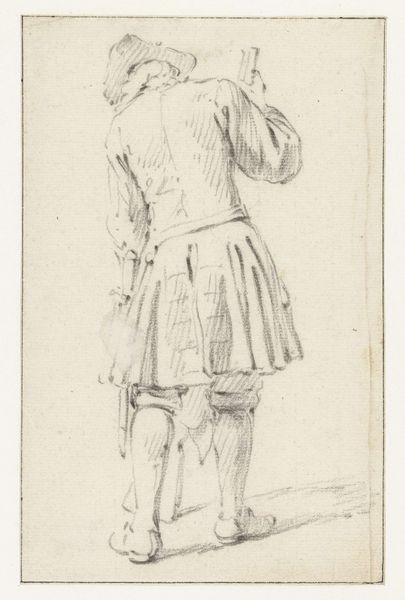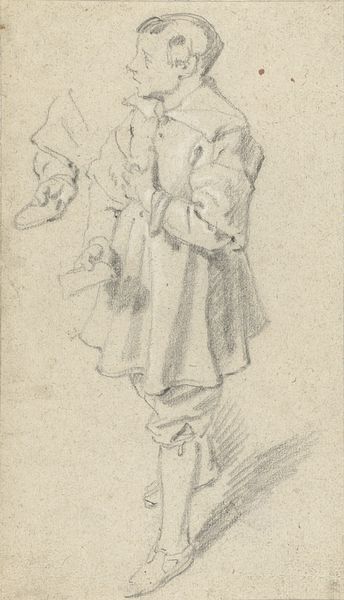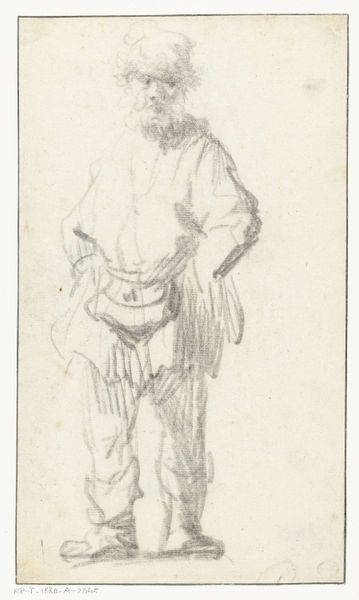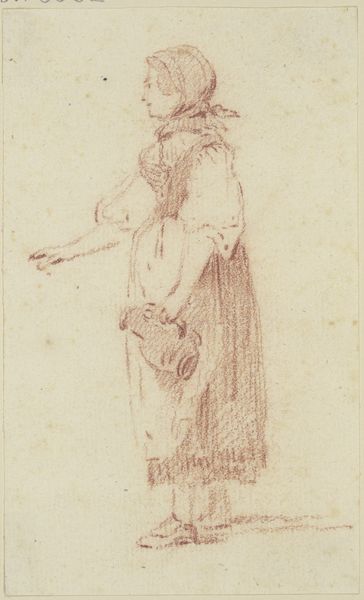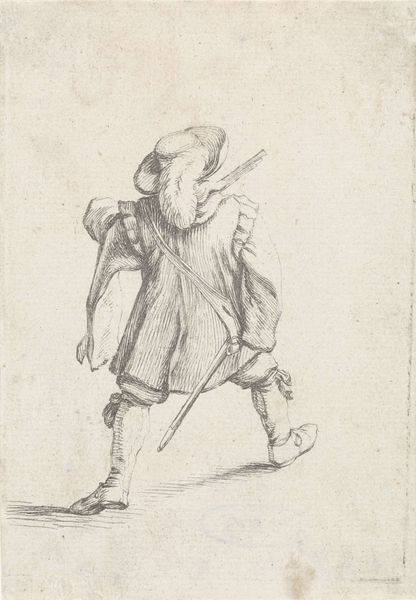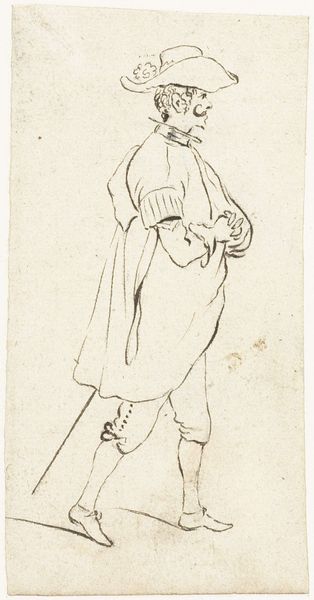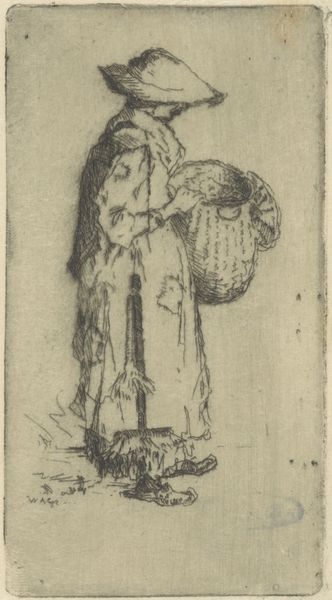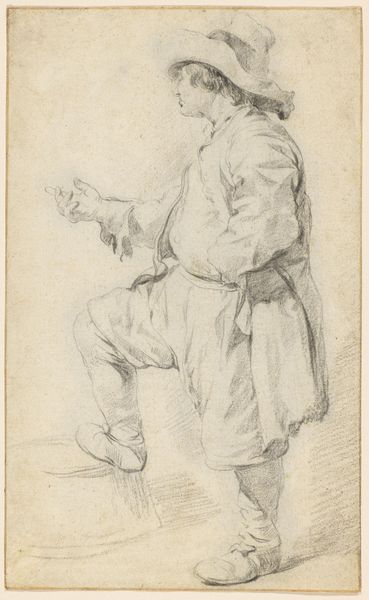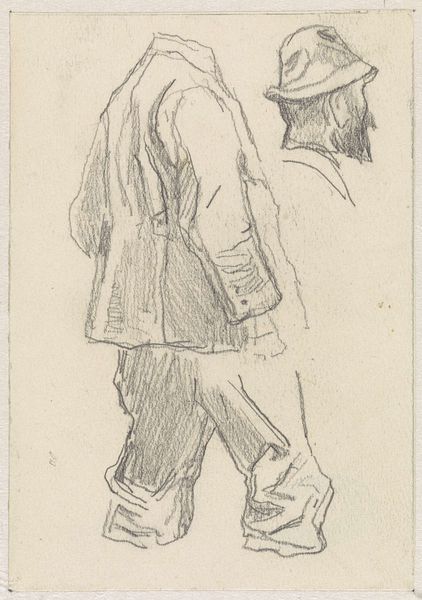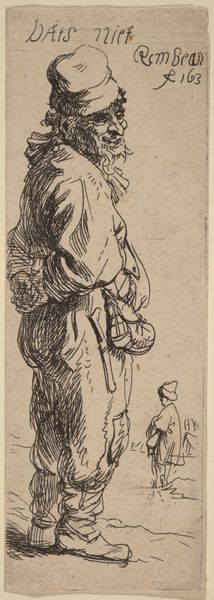
drawing, pencil
#
portrait
#
drawing
#
baroque
#
pencil sketch
#
figuration
#
pencil
Dimensions: height 163 mm, width 105 mm
Copyright: Rijks Museum: Open Domain
Editor: Here we have Dirk Maas's "Standing Soldier, Seen from Behind," created around 1690 with pencil on paper, currently held at the Rijksmuseum. The figure’s turned away, and there’s something rather vulnerable about the depiction. What's your take? Curator: That vulnerability, I think, speaks to a shift in the representation of soldiers at that time. Previously, they were often glorified, almost mythic figures, tools of state propaganda. But here, we see him from the rear, an unconventional angle that denies the viewer a heroic face or confident gaze. How does this choice, to show his back, influence our understanding of the soldier's role and status within the broader political landscape of the late 17th century? Editor: That's a great point! I hadn’t considered how subversive that perspective might be. So, is it questioning the idealized image, almost humanizing the soldier? Curator: Precisely. Maas offers a counter-narrative. Consider the role of art patrons during that period. Increasingly, art served not just the aristocracy but also a rising middle class. Could this less idealized depiction be catering to a new, perhaps more ambivalent, public sentiment towards military campaigns and the sacrifices they demanded? The Baroque period, with its emphasis on drama, also often explored the human condition. Editor: That makes me think about the understated style of the pencil drawing. Maybe Maas deliberately avoids the grandiosity associated with traditional military portraiture. Curator: Exactly! The medium itself pushes back against the expectations of heroic painting. By employing a humble pencil sketch, Maas might be deliberately subverting the grand narratives associated with warfare. He’s perhaps hinting at the everyday realities experienced by these figures, their anonymity in the face of political maneuverings. It's fascinating to see how art, even something as seemingly simple as this sketch, can reflect a society’s changing perceptions of power. Editor: It’s amazing how much historical context you can glean from something that appears so simple on the surface. Curator: And hopefully, that’s just the beginning!
Comments
No comments
Be the first to comment and join the conversation on the ultimate creative platform.
